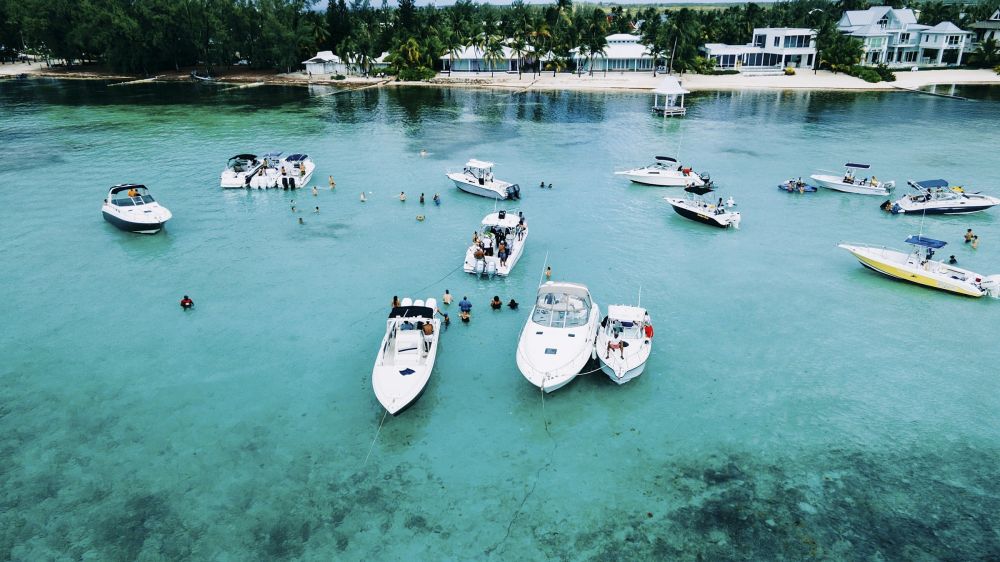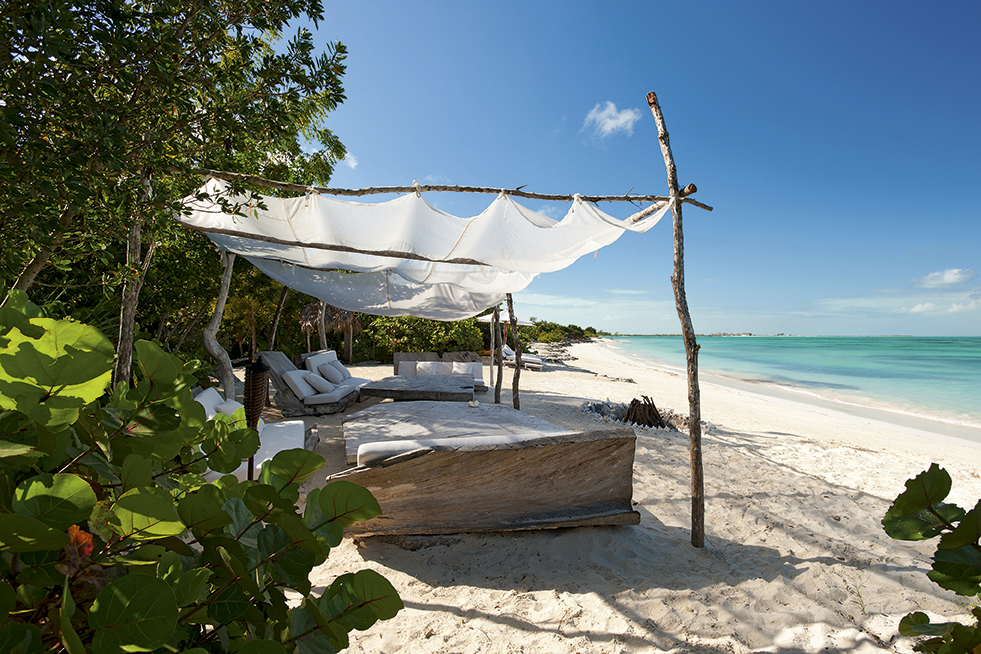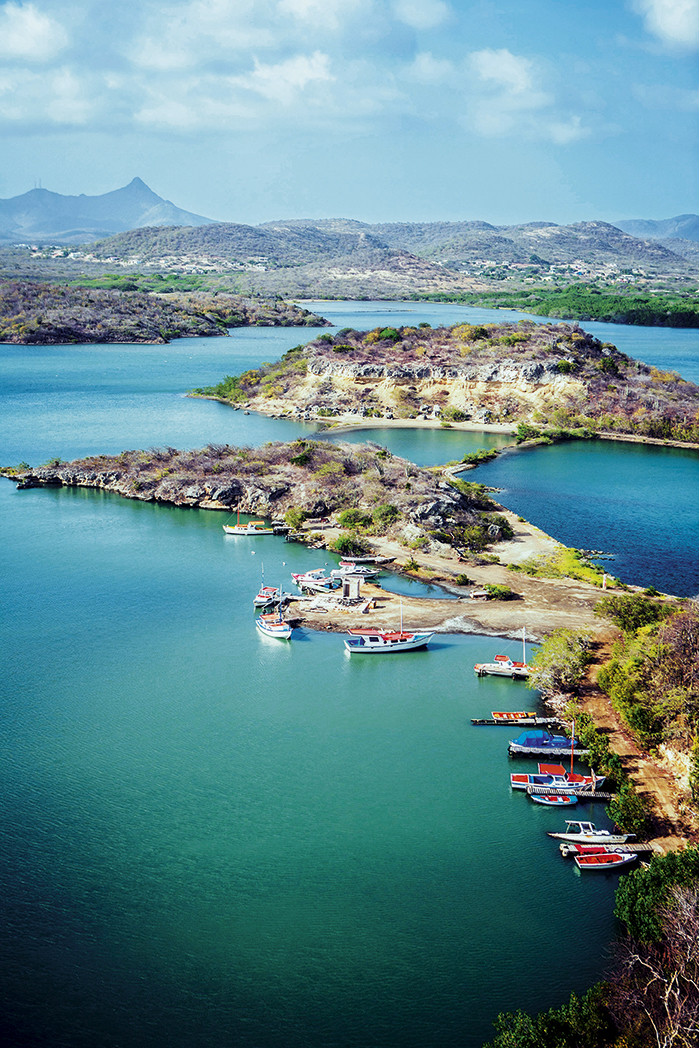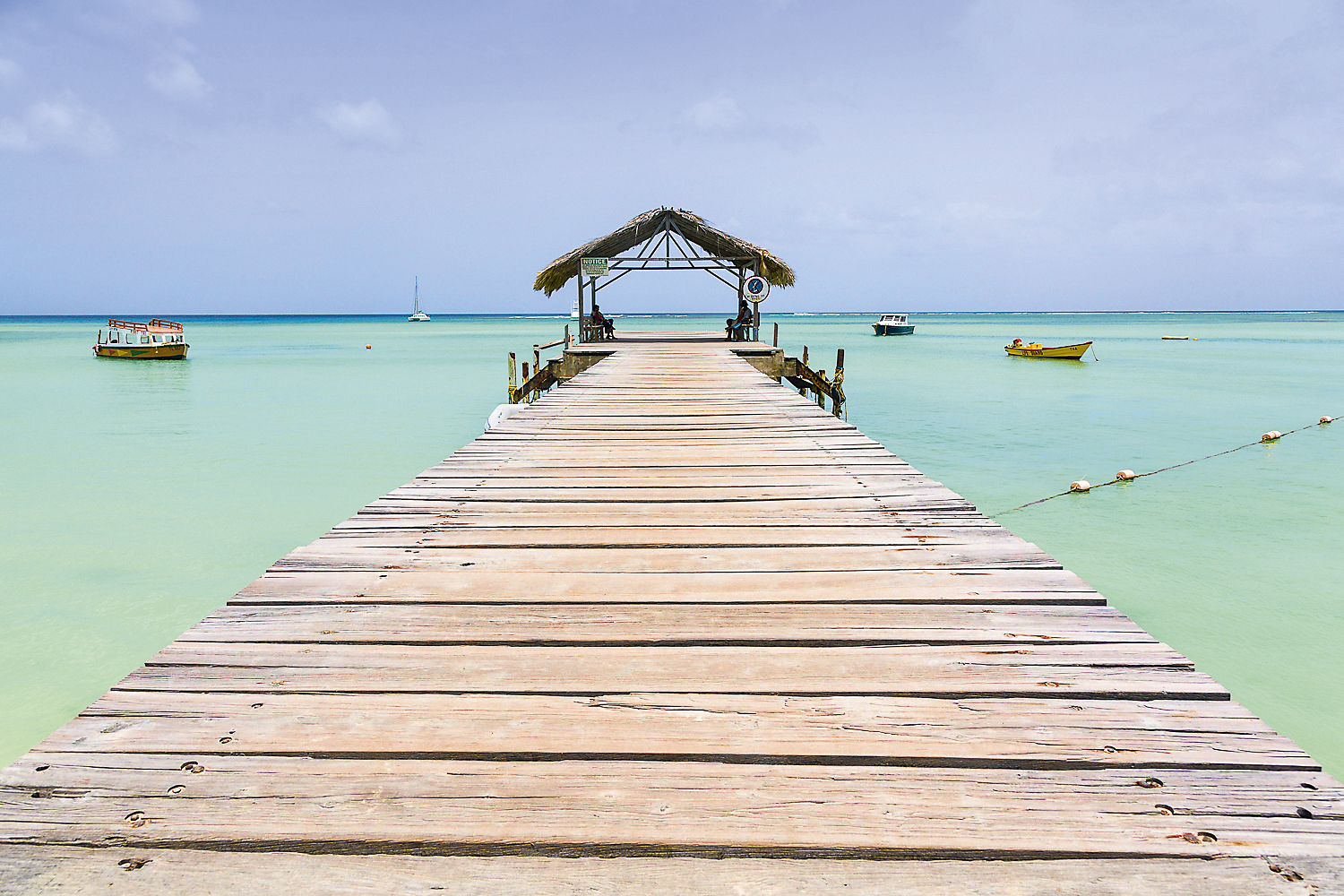Best of the Caribbean - Caribbean
Where will you find elegant architecture, which destination boasts most wildlife sightings and where to head for utter seclusion? Read on for your island playbook

Where will you find elegant architecture, which destination boasts most wildlife sightings and where to head for utter seclusion? Read on for your island playbook
Uninhabited cays, coral reefs and miles of dazzling sands make for a sense of disconnection from the outside world as you bask in turquoise waters
The Caribbean cliché of dazzling sands and jewel-toned seas reaches its apogee in the Turks and Caicos Islands. This British Overseas Territory sits to the southeast of the Bahamas, where its coral islands are fringed by bone-white beaches and shallow seas whose colours morph from turquoise to topaz with each passing cloud or shift in the tide. Of the 40 low-lying islands that make up the archipelago, only eight are inhabited – which leaves plenty of space for castaway day-trips and a real sense of getting away from it all.
For those arriving by air, the gateway island is Providenciales (or Provo), which is one of the westernmost isles and acts as the main tourist hub. As well as a well-renowned golf course, it’s home to miles of glorious sands at Grace Bay – one of the Caribbean’s best beaches – which falls within the Princess Alexandra National Park. This protected marine zone encompasses vibrant coral reefs, wetlands, mangroves and a number of uninhabited cays where wildlife such as sea turtles, iguanas, nurse sharks and eagle rays can be seen. There’s also a strong chance of meeting JoJo, a wild bottlenose dolphin who’s frequently encountered at Grace Bay and who seeks the company of people when he visits.
Provo has the widest choice of decent places to stay, from villa rentals to high-end hideaways such as Amanyara or the boutique brilliance of Point Grace which overlooks Grace Bay. Provo also offers your best bet for off-resort dining options. Island seafood (conch, lobster, grouper) is the thing to order, and local haunts such as Crackpot Kitchen and Caicos Café both in Grace Bay, are among the best spots to dig in.
At the other end of the island chain is Grand Turk, far smaller than Provo yet home to the capital, Cockburn Town (founded 1681) and a small population of donkeys: their ancestors would have worked on the salt pans when this was the primary industry. Life here is much more low-key than in Provo, with heritage architecture, small-scale hotels and a smattering of restaurants close to Cockburn Town’s waterfront. For things to do, consider joining an excursion to nearby Gibbs Cay to interact with wild stingrays. The cruise port at Grand Turk’s southern tip, however, is best avoided.
To really get away from it all though, there's nothing quite like a private island. On Parrot Cay, a short hop from Provo, super-luxurious COMO Parrot Cay is the only development on this 1,000-acre island, two thirds of which remains natural and pristine. Its mile-long beach is ideal for strolling, as are trails through the hinterland where lazy lizards, fat as cigars, reluctantly interrupt their basking to move out of your way. The sense of escapism that this island offers (combined with treatments at the COMO Shambhala spa) means there’s little to distract from the serious business of relaxation, making this – as elsewhere in Turks and Caicos – a great bet for indulgently disconnecting.

You won’t meet the crocodiles the islands are named after, but you’ll surely be able to stroke a stingray, spot birds and lizards in dazzling colours and go snorkelling among the turtles
Discovered in 1503 by Christopher Columbus, the three-strong Cayman archipelago sits south of Cuba and west of Jamaica. The crocodiles (caimanas in Spanish) that gave the islands their name may be long gone, but other native creatures add colour to island explorations. Most famous are the stingrays that gather in warm, shallow water on the offshore sandbanks dubbed Stingray City – one of Grand Cayman’s most popular attractions. Here, holidaymakers interact with wild southern stingrays, the larger females of which can grow to widths of nearly two metres. Despite deadly reputations, the rays are inquisitive and gentle, allowing themselves to be petted and stroked. It’s an incredible experience but can get pretty crowded, especially if there are cruise ships in port.
Far more intimate is a visit to leafy Queen Elizabeth II Botanic Park, which offers the best chance of meeting an island endemic: the blue iguana. Unique to Grand Cayman, these large, blue lizards had a rather close brush with extinction, but a captive breeding programme has boosted their numbers these past 20 years. The Caymans’ other unique native dragon, the Sister Islands rock iguana, is only found on Little Cayman and Cayman Brac, the two smaller islands. Equally endemic is the colourful Cayman brac parrot, whose woodland habitat is vulnerable to hurricane damage. The Sister Islands are also home to colonies of boobies, a type of seabird that in turn is harassed by piratical frigatebirds intent on stealing their fishy catches.
Sea turtles are also a common sight: numbers have recovered here since the animals stopped being plundered for meat. Along with parrotfish, groupers, nurse sharks, corals and even the odd sunken warship, turtles are highlights of many a snorkel or dive trip. The Caymans’ waters are renowned for exceptional visibility, while Grand Cayman is also known for night-time kayak trips to marvel at the phenomenon of bioluminescence.
Each of the islands has its own personality, where experiences range from sleepy to sumptuous. Grand Cayman is the most developed, with the focus falling on Seven Mile Beach’s sweeping curve of platinum sand backed by condominiums, hotels, galleries, duty-free shopping and restaurants. This is where the island’s reputation as a culinary capital is based, with a range of international cuisines alongside conch fritters, clam chowder and other island favourites. Among the most talked-about new spots is Tillies at the Cayman Islands’ first all-suite boutique hotel, Palm Heights where classic Caribbean dishes are served on the seafront. The big name on the food scene, however, is Eric Ripert, chef patron at the Ritz-Carlton’s Blue by Eric Ripert seafood restaurant. His annual Cayman Cookout takes place in January and brings cooking demonstrations, events and tastings to Seven Mile Beach. It all adds up to an island escape where three really is the magic number.

Waterfront buildings that paint the rainbow, historic districts with galleries, museums and cutting-edge design greet you in a land proud of its Dutch heritage
With a name derived from coração, the Portuguese word for ‘heart’, perhaps it’s no surprise how easy it is to fall for this Caribbean isle. Along with its neighbours Aruba and Bonaire, it’s one of what’s known as the ABC Islands that sit at the western end of the Leeward Antilles, just off Venezuela. Still known as the Netherlands Antilles, the ABCs wear their Dutch heritage with pride and, indeed, it’s the colonial architecture that makes Curaçao so special. Its capital, Willemstad, is recognised for its rainbow-bright waterfront buildings whose style reflects the gabled canal houses back in the mother country. Now a Unesco World Heritage Site, Willemstad is a joy to discover. Its historic districts’ Old World elegance – and especially the neighbourhoods of Punda, Otrobanda and Pietermaai – are alive with galleries, shops, bars, restaurants, murals, museums and cutting-edge design.
The vibe here is very different from your typical Caribbean island. Tourism isn’t the mainstay, so although there are plenty of laid-back resorts, there’s a more authentic energy; the pulse of an island that seems plugged into the world. In Willemstad, this translates into credible and thriving, contemporary culinary and art scenes that might encompass the Kura Hulanda Museum of African artefacts, Cuba-meets-New-Orleans cocktail bar Mundo Bizarro and jazz café Miles or Dutch Caribbean restaurant De Gouverneur which is housed in a former governor’s dwelling place.
If that all sounds quite comfortingly like a little slice of Europe, there’s more good news: the island has all the beaches and Caribbean blues that a holiday demands, plus the added bonus of lying safely outside the hurricane belt. Wrecks and reefs – many of which can be easily accessed from shore – make for excellent snorkelling and diving, with the Underwater Marine Park on the south coast being particularly popular.
Elsewhere on the coast are trendy beach bars and restaurants, while the rugged and wild north west is all about cacti, caves and tucked-away beaches. This is where you’ll find Christoffel National Park, whose hiking trails include one to the summit of Christoffel Mountain, Curaçao’s highest point. Celebrate the climb by cooling off afterwards at nearby Grote Knip, a perfect cove on the west coast with a sandy beach and impossibly blue water. Closer still to Christoffel on the east coast are the cliffs of Shete Boka National Park, where waves rolling in from the Caribbean pound against inlets, caves and coral rock formations. On particularly rough days, the waves form natural fountains and spouts that shoot many metres high (the name of one inlet, Boka Pistol, provides an idea of the sound effect). It’s the absolute antithesis of a typical Caribbean beach scene - which is perfectly on par with an island that likes to do things that bit differently.

Home to the original Caribbean carnival, Trinidad’s little sister keeps the party atmosphere alive, with an irrepressible joie de vivre and plenty of opportunity to sample spicy Creole cuisine
The twin-island nation of Trinidad and Tobago plays host to the original Caribbean carnival – all feathers, steel bands, strings of beads and dancing in the streets. Trinidad’s event (the first of its kind) took root in the late 18th century and the tradition was soon adopted throughout the Caribbean region. But although the main event takes place annually in February or March, its irrepressible joie de vivre lives on throughout the year in the islands’ colour, creativity, calypso music and spicy Creole cuisine.
Tobago many be Trinidad’s smaller and sleepier sister isle, but there’s plenty of colour and life to be found among its forests and shores. Some of the local birdlife dresses in carnival shades year-round, from the scarlet ibis and blue-backed manakin to a flurry of hummingbirds with fabulous names: white-tailed sabrewing, white-necked jacobin, copper-rumped and ruby-topaz. Motmots, kingbirds and rufous-tailed jacamars add further splashes of dazzling brightness, while the seabird sanctuary of Little Tobago hosts elegant, streamer-tailed tropicbirds. Colours under the sea here are no less extraordinary: take a snorkelling or glass-bottomed boat trip to experience Little Tobago’s coral gardens, with guest appearances from rainbow-hued reef fish or even a passing turtle.
Turtles, in fact, are a big draw in Tobago. Several beaches in Courland Bay, on the west coast, draw massive leatherback turtles (the world’s largest sea turtle species) to haul out and nest under cover of darkness. Green and hawksbill turtles breed here, too, which stretches the nesting season out from January until September, though peak activity tends to occur between March and June. Spurred by grassroots conservation activities, tourism has proved a boon for the leatherbacks and helped to change local attitudes: turtle-watching tours now provide alternative sources of income to poaching, which means that far fewer nesting females are harvested for their meat.
Far more acceptable seafood comes in the form of curried crab and dumplings, which is Tobago’s signature dish. For maximum authenticity, hit the beach kiosks at Store Bay, where local blue crabs are cooked up in coconut milk and served with dumplings or another ‘provision’ (starchy staple, such as cassava or plantain). Other Creole classics worth sampling might include pelau (a one-pot rice dish) with oxtail or callaloo (greens), stewed pigeon peas or cow heel soup. More typical of Caribbean cuisine might be grilled, fried or curried fish (wahoo, kingfish, tuna, snapper), or delicious roti flat bread stuffed with curried goat. And, of course, beyond beach-shack home cooking there are proper restaurants and beachside bars such as The Seahorse Inn and Caribbean Kitchen both of which showcase local produce for a carnival on your plate.

From the dizzying heights of a volcano to a limestone plateau, with hiking trails in between, here’s a place to get active – and then there’s the authentic dining scene in outlying islands to discover
There’s a definite Francophile flair to Guadeloupe, a 12-strong island group in the Eastern Caribbean’s Lesser Antilles. Wedged between Antigua to the north and Dominica to the south, this French Overseas Territory is centred on the twin isles of Grande-Terre and Basse-Terre. Separated by the seawater channel of Rivière Salée, the two are connected by low-lying mangrove swamps crossed by a pair of bridges. Their similarities are slim, however: lower-lying Grande-Terre to the east is known for its surfing scene and laid-back beach towns, while jungle-wreathed Basse-Terre lays claim to the Parc National de la Guadeloupe. Topping this chunk of high ground are the dizzying heights of La Soufrière volcano, which is wrapped in rainforest, waterfalls and a good few hiking trails. Key among these is the trek to the top, all the way to the lunar-like summit through tropical ferns and shrubs to reach the steaming, sulphurous crater itself.
Back at sea level, Basse-Terre does have one of Guadeloupe’s best beaches at Grande Anse, whose 1km sweep of sand is the longest in the archipelago. It also benefits from being close to Deshaies, a sleepy fishing village with a cosmopolitan collection of bars and restaurants. For more active beach days, Plage de Malendure round on the west coast offers kayaking, diving and other water sports. The reason for its popularity lies just offshore at Îlets Pigeon, where the Réserve Cousteau protects coral reefs, sponge-covered wrecks and abundant marine life.
Over on Grande-Terre, the limestone plateau landscape may be less remarkable, but this is where you’ll find Pointe-à-Pitre, the New Orleans of the Caribbean. Its colonial architecture and spice markets invite idle exploring, as does the colourful market in Sainte-Anne further down the coast. Grand-Terre lays claim to the islands’ most sophisticated dining scene, but things feel more authentic in the outlying islands. On La Désirade, Marie-Galante and nine islands of Les Saintes (of which two – Terre-de-Haut and Terre-de-Bas – are inhabited), you’ll find fresh seafood or organic farms where ox-drawn carts still ply the plantations. Les Saintes are known for another Grande Anse (on Terre-de-Bas: it’s one of the Caribbean’s loveliest coves) and Tourment d’Amour, a coconut custard confection that’s a Guadeloupe speciality. Don’t leave the beach without cooling off with a coconut sorbet flavoured with cinnamon, nutmeg, vanilla and other island spices. Elsewhere, seek out island-produced rum and Arabica coffee – Guadeloupe is said to be the oldest coffee-growing region in the Americas; and everywhere, listen out for the rhythmic beat of Zouk, the definitive sound of the French Caribbean.

Subscribe and view full print editions online... Subscribe